Understanding Data Security Posture Management (DSPM)
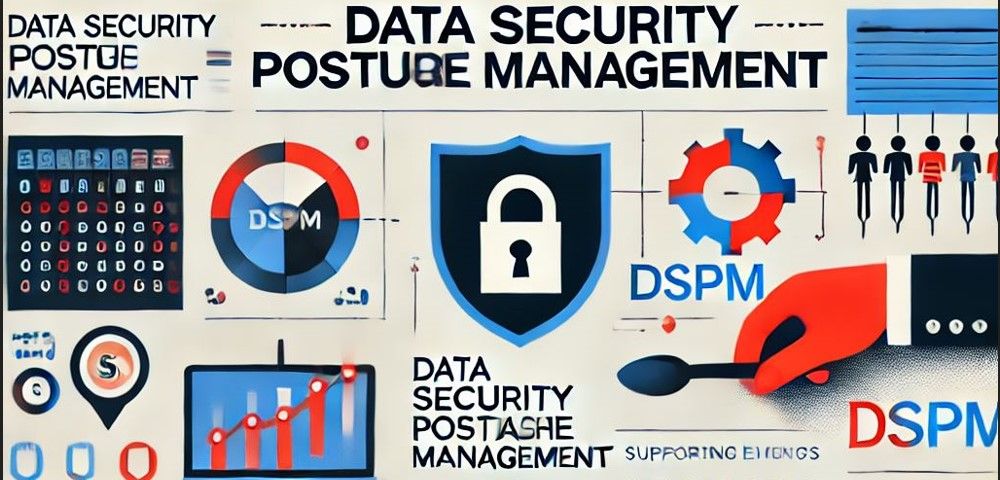
In today’s digital landscape, safeguarding sensitive data is paramount. Data Security Posture Management (DSPM) is an emerging approach that helps organizations manage and secure their data assets effectively. This blog will delve into the key aspects of DSPM, its benefits, and how it can be implemented using tools like Microsoft Purview.
What is DSPM?
Data Security Posture Management (DSPM) is a newly introduced feature in Microsoft Purview designed to help organizations manage and secure their data. It quickly identifies unprotected sensitive data assets and potentially risky user activities and presents them on the dashboard. DSPM offers continuous monitoring, assessment, and mitigation of vulnerabilities, ensuring that sensitive data remains protected.
Likewise, Cloud Security Posture Management (CSPM) focuses on cloud infrastructure security, while Data Security Posture Management (DSPM) focuses on data security. In the CSPM portal integrated into the Azure portal, we can see security misconfigurations and security gaps in Azure resources, and in the DSPM portal embedded within the Microsoft Purview portal, we can see misconfigurations and data security gaps. Let's examine the major difference between these two tools.
DSPM vs CSPM
Data Security Posture Management (DSPM) and Cloud Security Posture Management (CSPM) are critical for maintaining a robust security posture, but they focus on different security aspects.
DSPM primarily secures an organization’s data by managing, classifying, and protecting data at rest, in transit, and during processing. It ensures data privacy, integrity, and compliance and helps identify vulnerabilities, misconfigurations, and compliance issues related to data security. This makes DSPM ideal for organizations that need to protect sensitive data across various environments. Below is the image how it looks like.
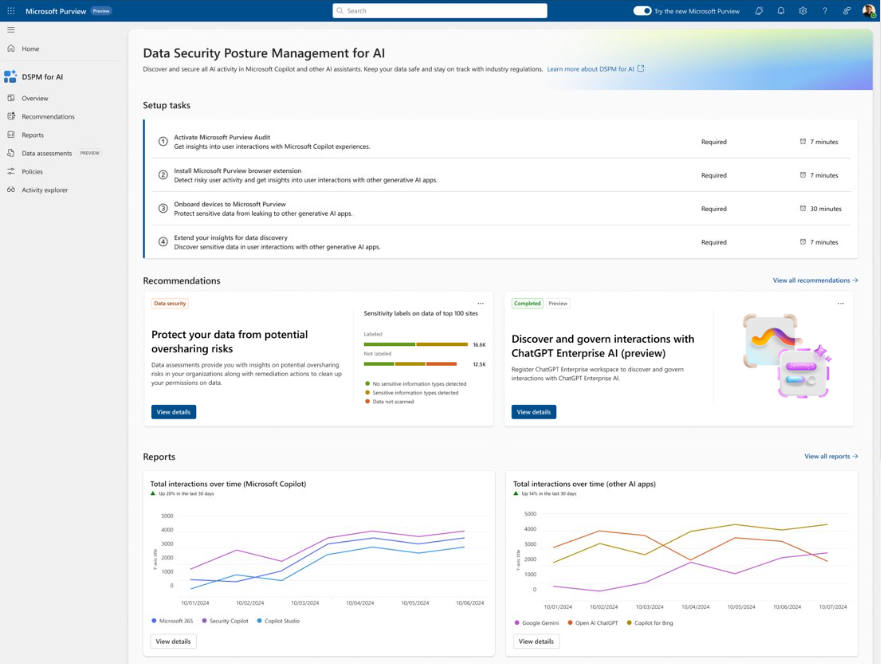
On the other hand, CSPM focuses on securing cloud infrastructures and services by emphasizing the configuration and monitoring of cloud environments to identify and rectify vulnerabilities, compliance violations, and misconfigurations. CSPM secures cloud infrastructure, including IaaS, PaaS, and SaaS architectures, and is best suited for organizations that rely heavily on cloud services and need to ensure their cloud environments are secure and compliant. In summary, while DSPM is centered around data security, CSPM focuses on the security of cloud infrastructure, and both are crucial for a comprehensive security strategy, especially in cloud-first organizations.

I hope we now have a better understanding of DSPM and how it differs from CSPM. Let’s return to DSPM and discuss it in more detail.
Implementing DSPM with Microsoft Purview
Microsoft Purview offers a robust DSPM solution that integrates seamlessly with existing security frameworks. Here’s how you can get started:
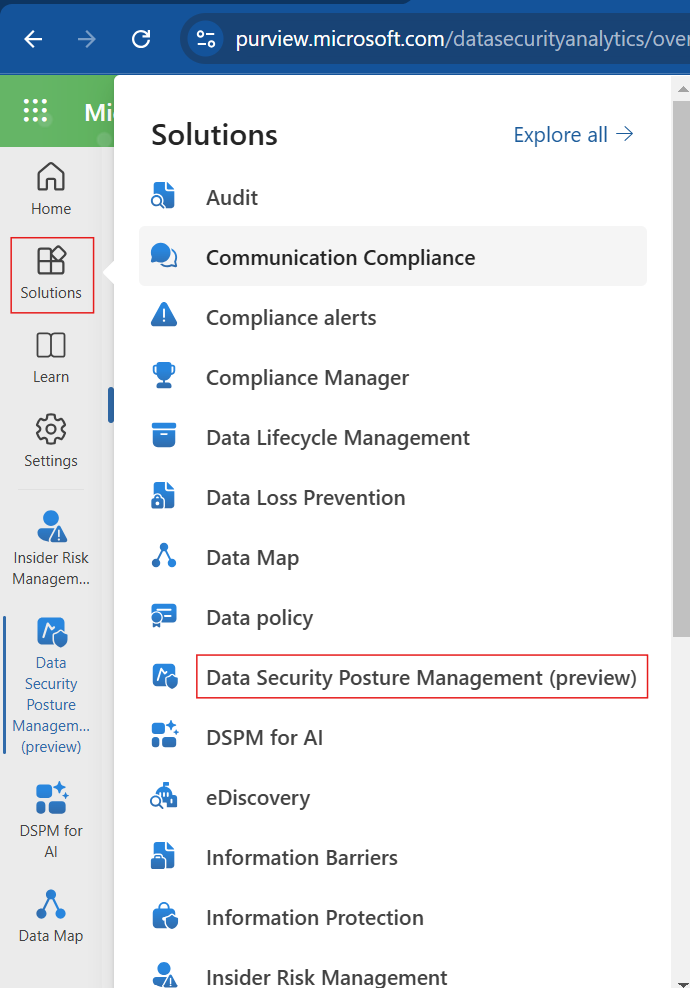
Click on DSPM
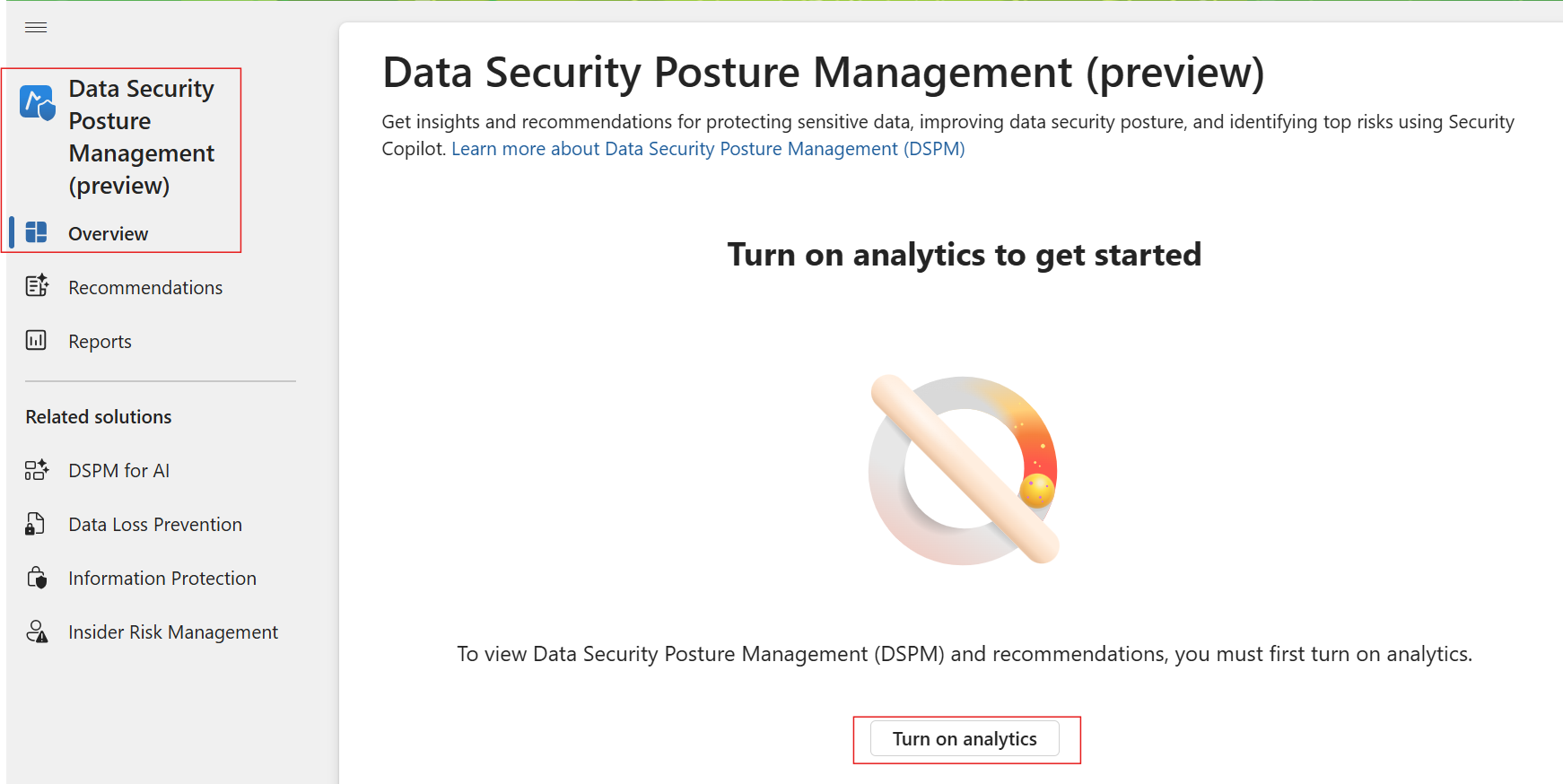
Click On Turn on Analytics
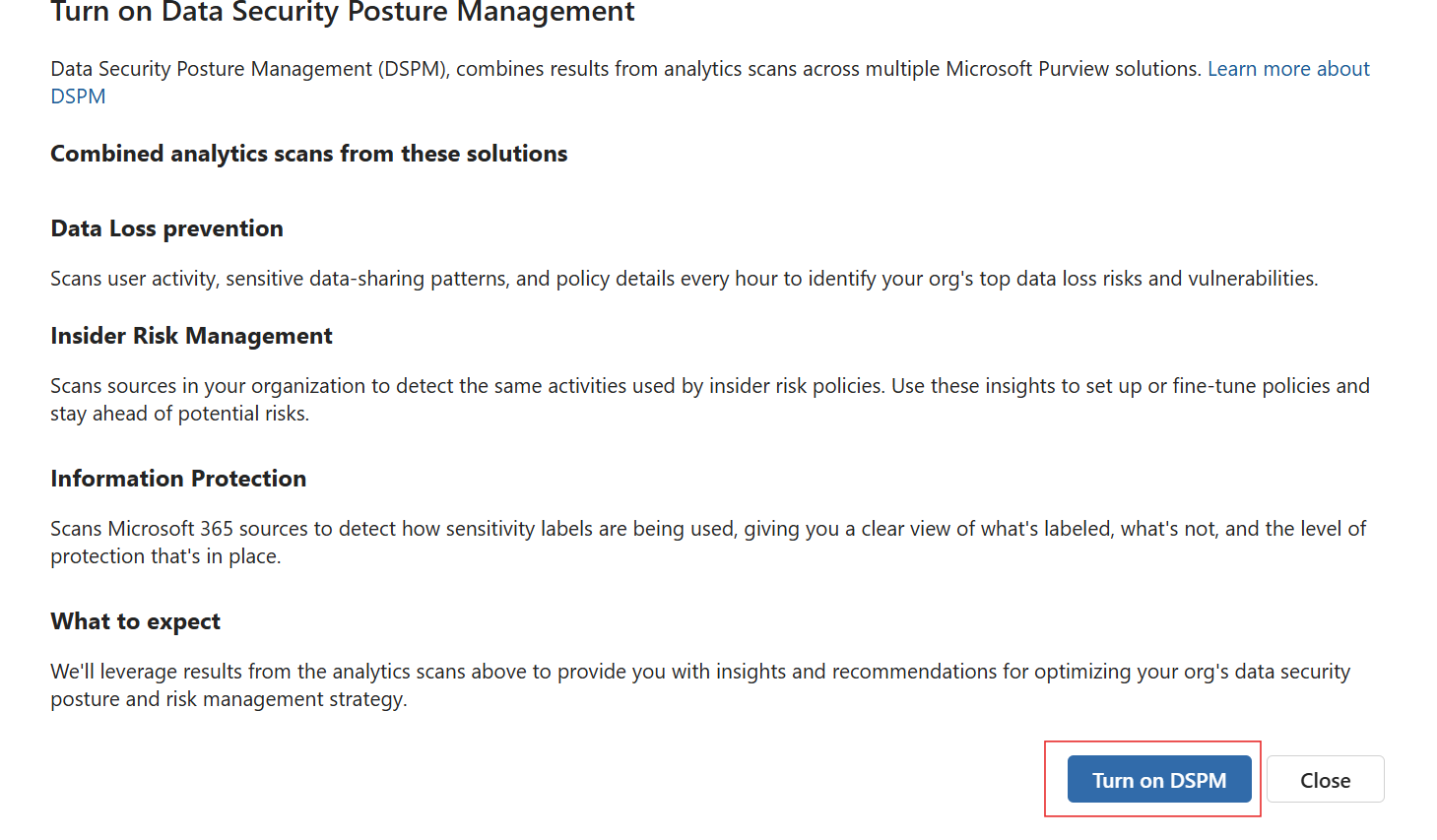
It may take up to 24 hours to show the data.
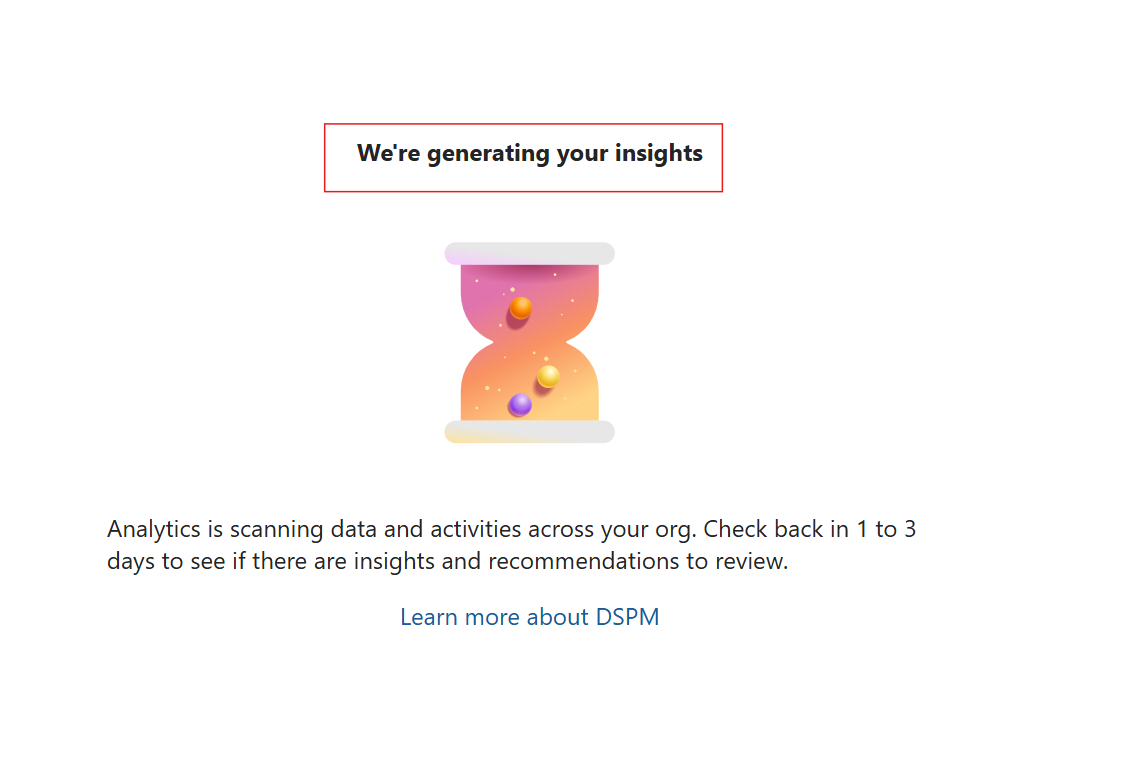
Key Components of DSPM
- Visibility and Discovery: DSPM tools scan and identify sensitive data across the organization, providing a clear view of where data resides and how it is being used.
- Risk Assessment: Automated risk assessments help prioritize vulnerabilities based on their potential impact, allowing organizations to focus on the most critical issues.
- Policy Enforcement: DSPM ensures that security policies are consistently applied and enforced across all data assets, reducing the risk of data breaches.
- Continuous Monitoring: Real-time monitoring of data activities helps detect and respond to security incidents promptly.
- Actionable Insights: DSPM provides detailed reports and insights, enabling organizations to make informed decisions about their data security strategies.
Benefits of DSPM
- Enhanced Data Protection: By continuously monitoring and assessing data security risks, DSPM helps protect sensitive information from unauthorized access and breaches.
- Improved Compliance: DSPM ensures that data security policies align with regulatory requirements, helping organizations maintain compliance with industry standards.
- Proactive Risk Management: With automated risk assessments and real-time monitoring, DSPM enables organizations to proactively address vulnerabilities before they can be exploited.
- Streamlined Security Operations: DSPM simplifies the management of data security by providing a centralized platform for monitoring, assessment, and policy enforcement.
Conclusion
Data Security Posture Management (DSPM) is a critical component of modern data security strategies. By providing comprehensive visibility, continuous monitoring, and actionable insights, DSPM helps organizations protect their sensitive data and maintain a strong security posture. Implementing DSPM with tools like Microsoft Purview can streamline security operations and ensure compliance with regulatory requirements.
